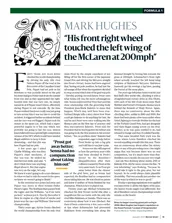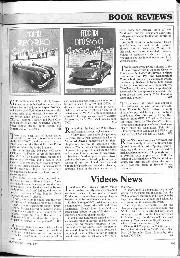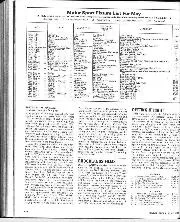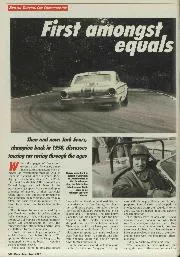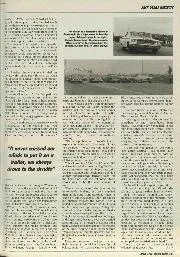ON THE DASH OARD
WHEN I look at the neatly arranged instrument board of a modern sports car, I cannot help thinking of a car I owned, not so many years ago, on which the only break in the barren unirormity of the dashboard was provided by a small pressure gauge and the handle of an oil pump. Even this gauge would have been absent had we used a gravity tank, but as it was necessary to force the fuel from the rear tank, it was also advisable to know how hard it was being forced. Electric fuel pumps, to-day so common, had not been thought of, while the success of its lubrication system depended on the driver’s ability to gauge accurately, by sound, smell, and experience, which portions of the machinery required oil, the same being directed thither by the said pump handle and a battery of taps concealed from the driver’s view. As for computing speed, this was a matter of judgment, checked by
the results sheet, after a hill climb or speed trial.
Such methods may have taught people to know the feel of machinery, but they would never do now. Take a modern sports car, fitted with a supercharger, and what do we see on the dashboard ? An engine rev. counter, speedometer, oil pressure gauge, oil thermometer, water thermometer, speedometer, clock, blower pressure gauge, and petrol tank gauge, apart from the usual electrical equipment.
The oil indicators are the most important to watch in normal travel, as a broken pipe, or lack of oil in the sump will be immediately shown by a drop in the pressure, while a choked pipe somewhere will cause a sudden and unusual rise. In either case the cause must be investigated, and the timely warning may save a lot of money and trouble. Another important item in ensuring reliability is the rev. counter. On most engines the safe limit,
whether governed by lubrication, crankshaft strength, valve bounce, or whatever it may be, is usually known, and this instrument is the only really accurate way of telling that the limit is not overstepped.
The thermometers are also valuable warnings of trouble, and the radiator temperature is particularly useful when tuning a car, to check that a change of mixture or ignition timing is not causing excessive heat, leading to damage which could have been avoided. Passing from the instruments which govern the safety of the mechanism, we come to those which show its performance. Here the rev, counter has dual purpose, backed by the speedometer, and if possible by a clock with stop mechanism, so that acceleration times to various speeds can be checked and compared with the best known performance. Both Smith’s and Jaeger’s produce a variety of indicators and clocks, the latest productions of the latter firm
being a very ingenious combined clock and rev, counter, which should be of interest to the sports car owner. Speedometers are also made which record the running time as well as the distance, and are excellent for checking performance on a long run. An important point with speedometers is to make sure that the drive gear-ratio is correct, as many of the optimistic speed claims one
hears are due to the gear ratio being incorrect, and are no fault of the instruments themselves, but of the makers who fit them. Another interesting fitting is the gradient meter, which also gives a measure of acceleration, braking and frictional losses. The Tapley is probably the best known example of this type, which works on the principle of a pendulum. Two scales
are given, one giving the gradient (only correct if the car is travelling at uniform speed), and the other giving the pull (either acceleration or braking) in pounds per ton.
The accuracy of the modern instruments has played a great part in the development of the sports car, and those who wish to get the best out of their motors should take due note of their readings.—B.
